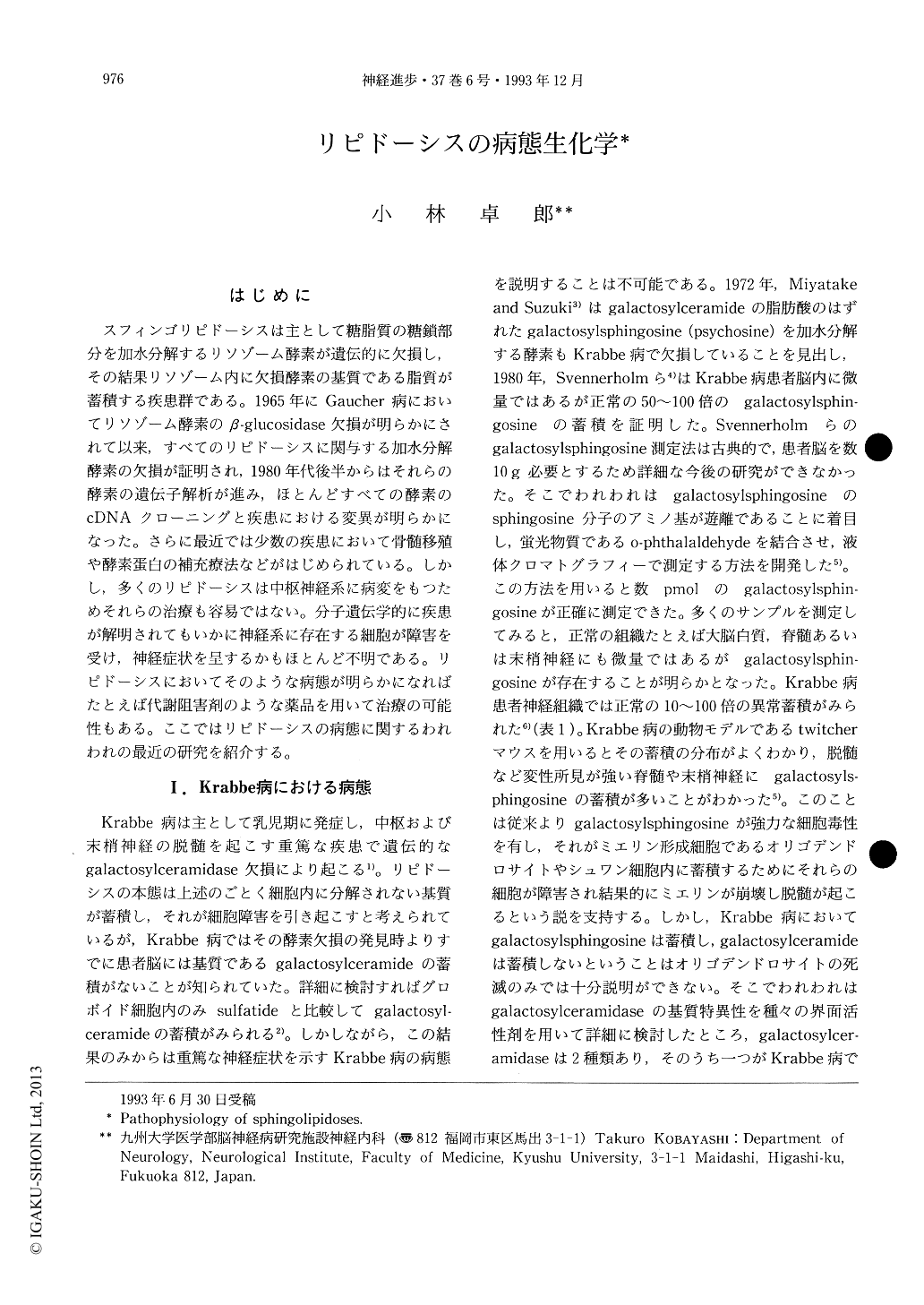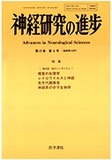Japanese
English
- 有料閲覧
- Abstract 文献概要
- 1ページ目 Look Inside
はじめに
スフィンゴリピドーシスは主として糖脂質の糖鎖部分を加水分解するリソゾーム酵素が遺伝的に欠損し,その結果リソゾーム内に欠損酵素の基質である脂質が蓄積する疾患群である。1965年にGaucher病においてリソゾーム酵素のβ-glucosidase欠損が明らかにされて以来,すべてのリピドーシスに関与する加水分解酵素の欠損が証明され,1980年代後半からはそれらの酵素の遺伝子解析が進み,ほとんどすべての酵素のcDNAクローニングと疾患における変異が明らかになった。さらに最近では少数の疾患において骨髄移殖や酵素蛋白の補充療法などがはじめられている。しかし,多くのリピドーシスは中枢神経系に病変をもつためそれらの治療も容易ではない。分子遺伝学的に疾患が解明されてもいかに神経系に存在する細胞が障害を受け,神経症状を呈するかもほとんど不明である。リピドーシスにおいてそのような病態が明らかになればたとえば代謝阻害剤のような薬品を用いて治療の可能性もある。ここではリピドーシスの病態に関するわれわれの最近の研究を紹介する。
Sphingolipidosis is a syndrome in which lysosomal enzymes hydrolyzing sphingolipids are genetically deficient and subsequently the undegraded lipids accumulate in the cell. Although genetic defect at molecular level has been elucidated in most of the sphingolipidoses, pathophysiology of this syndrome is not fully understood; it is not known why nerve cells or glial cells degenerate, if only the accumulated lipid induces cellular dysfunction, and why there are phenotypic variations even though the molecular defects are the same. In order to answer these questions, we first investigated Krabbe disease, in which there is no accumulation of galactosylceramide, a natural substrate of the deficient enzyme. Using a sensitive assay method, we demonstrated an abnormal accumulation of galactosylsphingosine (lyso-compound of galactosylceramide) in the tissue. The accumulation of the lipid correlated well with the pathology in the nervous tissue. Next we looked for lysosphingolipids in tissues of other sphingolipidosis patients and found an abnormal accumulation of the lipid in tissues from patients with metachromatic leukodystrophy, GM1 gangliosidosis or GM2 gangliosidosis. These lysosphingolipids have been shown to be cytotoxic and the accumulation of the lipids explains well the degeneration of the cell. Finally we evaluated the pathway of the synthesis of these lysosphingolipids. We found a normal occurrence of free sphingoid bases in the tissue and cultured fibroblasts, and demonstrated that the free sphingoid bases in the microsomes are utilized for the synthesis of lysosphingolipids. In experiments using cultured fibroblasts, we recently obtained data suggesting that some of the lysosphingolipids are derived by the deacylation of sphingolipids, though more experiments are needed to confirm this theory.

Copyright © 1993, Igaku-Shoin Ltd. All rights reserved.


